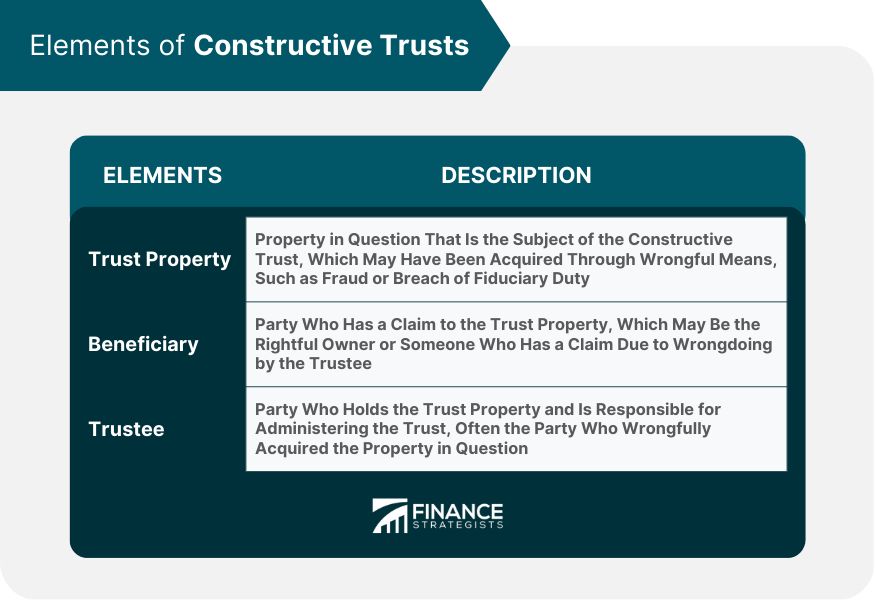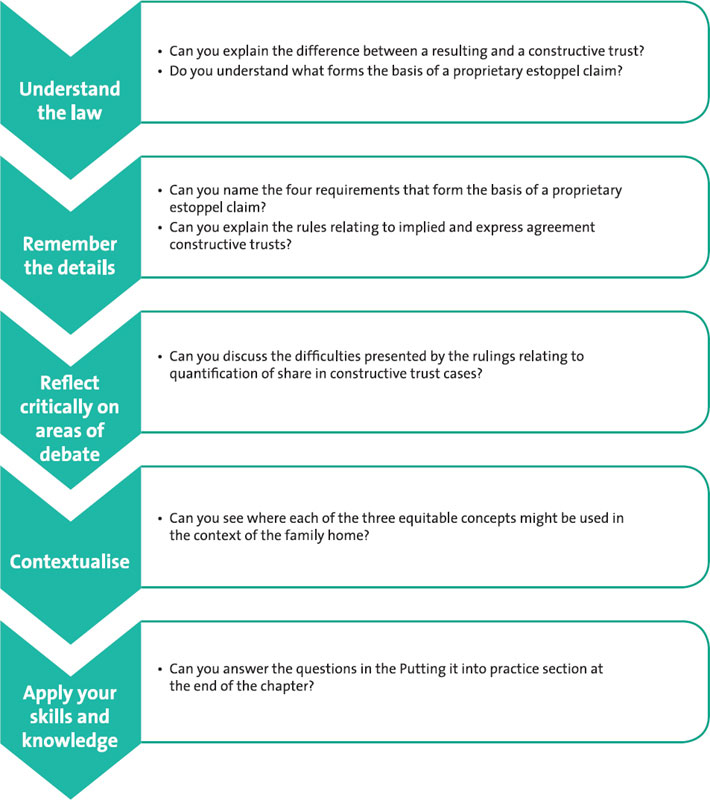Frequent Mistakes About What Is A Constructive Trust and the Truth Behind It
Frequent Mistakes About What Is A Constructive Trust and the Truth Behind It
Blog Article
Unveiling the Advantages of a Useful Trust Fund in Handling Beneficiary Disputes
The idea of a useful depend on becomes a crucial tool in the intricate realm of beneficiary conflicts, providing a nuanced service to conflicts that typically develop from wrongful residential or commercial property retention. By fostering a fiduciary relationship between celebrations, this fair treatment not only helps with quick resolutions but also offers to deter possible transgression. As we discover the complex benefits of useful counts on, one may start to examine just how these devices can reshape the landscape of estate conflicts and contribute to a more fair circulation of possessions among recipients.
Meaning of Constructive Depend On
A useful trust is regularly developed by courts to attend to situations where one party has actually wrongfully acquired or retained property that truly belongs to another (What Is A Constructive Trust). This lawful idea is not a conventional trust, as it does not call for the formalities typically connected with trust production, such as a written arrangement or the objective of the parties included. Instead, a positive count on emerges by operation of regulation, serving as a fair remedy to avoid unfair enrichment
The courts enforce a useful trust fund when it is figured out that event holds home under conditions that, in equity and good principles, need to not permit them to maintain it. Common situations entail deceptive activities, breaches of fiduciary responsibility, or conditions where a party has actually gotten residential property through incorrect ways. The positive count on therefore operates to protect the civil liberties of the rightful owner by making sure that the property is held for their benefit.
When developed, the positive trust needs the celebration in ownership of the property to convey it to the rightful owner, therefore remedying the wrongful scenario. This device underscores the legal system's commitment to fairness and justice in home conflicts, highlighting the value of moral conduct in possession and transfer of properties.
Advantages of Positive Trust Funds
Positive trust funds offer numerous substantial advantages in lawful disagreements entailing building civil liberties. Largely, they offer as a fair treatment, allowing courts to deal with situations where a party has actually wrongfully gotten or preserved building that truly belongs to another. This develops a structure for justness, guaranteeing that the rightful owner is made up and the unjustified enrichment of the criminal is cut.
Furthermore, positive trusts can quicken resolution in disputes over estate assets, therefore minimizing the usually contentious and lengthy lawsuits procedures related to typical building conflicts. Their flexibility enables courts to tailor solutions to fit the particular conditions of each situation, which can result in even more adequate outcomes for all events involved.
In addition, constructive trust funds promote openness and accountability among fiduciaries and recipients, as they require the latter to act in the very best interests of the previous. This reinforces the stability of fiduciary relationships, promoting trust and teamwork. Finally, by preventing transgression pertaining to property ownership, useful trust funds contribute to the general security of legal and monetary systems, ensuring that residential property rights are respected and upheld within society.
How Constructive Counts On Job

In method, when a useful trust fund is enforced, the court recognizes the building concerned and establishes a fiduciary relationship between the parties involved. The party that holds the property becomes a trustee, obliged to handle it for the advantage of the rightful owner, called the beneficiary. This relationship is not based upon an official contract however rather on the principle of equity, intending to remedy circumstances where one event's gain straight associates with another's loss.

Instance Research Studies and Instances
When taking a look at the functional application of positive trusts, numerous case research studies highlight just how courts browse complicated situations entailing unjustified enrichment. One significant case is * Pettkus v. Becker *, where the High Court of copyright established a constructive trust fund to remedy the unjust enrichment of one celebration over one more in a long-term connection. The court identified that the payments of one partner to the acquisition of property validated the imposition of a positive count on, making certain fair circulation.
An additional considerable instance is * Gisborne v. Gisborne *, where the court imposed a positive count on to resolve the insurance claims of brother or sisters over their deceased bro's estate. The court recognized the contributions made by the brother or sisters in keeping the household property, causing a choice that needed the estate to make up those contributions, thus protecting against unjust enrichment.
These situations exemplify just how constructive counts on can properly deal with conflicts by concentrating on justness and the prevention of unfair enrichment. By checking out the specific contributions and situations of the events entailed, courts can apply constructive depends on to attain simply outcomes, ultimately strengthening the equitable concepts underpinning these lawful mechanisms.

Steps to Develop a Positive Count On
To develop a constructive count on, numerous key steps need to be followed to guarantee that the case is substantiated and lawfully acknowledged. The complaintant has to demonstrate the additional reading existence of a fiduciary relationship or a circumstance that calls for the charge of a positive count on, such as fraud, unjustified enrichment, or a violation of duty.
2nd, it is important to gather and present compelling evidence that supports the case. This consists of documentation and testimonies that illustrate the situations causing the supposed wrongful retention of property or benefits by the trustee.
Third, the claimant needs to submit an application in the proper court, verbalizing the grounds for requesting the imposition of a constructive trust fund. This application has to detail the specifics of the connection and the unfair enrichment that requires the trust.
Conclusion
To conclude, useful trusts stand for a vital equitable solution in the have a peek at this site realm of beneficiary problems, efficiently addressing wrongful building retention and stopping unjustified enrichment. By creating a fiduciary partnership, these depends on enhance openness and accountability amongst residential or commercial property owners. The expedited resolution of estate conflicts and the frustration of misbehavior add to better stability within economic and legal systems. Eventually, positive counts on advertise fairness amongst recipients, guaranteeing that rightful possession is maintained and protected.
A positive trust fund is frequently established by courts to deal with circumstances where one party has wrongfully acquired or preserved residential or commercial property that rightfully belongs to one more.The courts impose a useful depend on when it is established that one event holds residential or commercial property under situations that, in equity and great conscience, need to not allow them to retain it. By discouraging misconduct related to home ownership, useful counts on contribute to the overall stability of economic and legal systems, ensuring that residential or commercial property rights are respected and upheld within culture.
In technique, when a moved here useful count on is imposed, the court identifies the property in inquiry and develops a fiduciary connection between the parties involved. What Is A Constructive Trust. The court determined that the payments of one companion to the purchase of residential or commercial property justified the charge of a useful trust, making certain fair distribution
Report this page